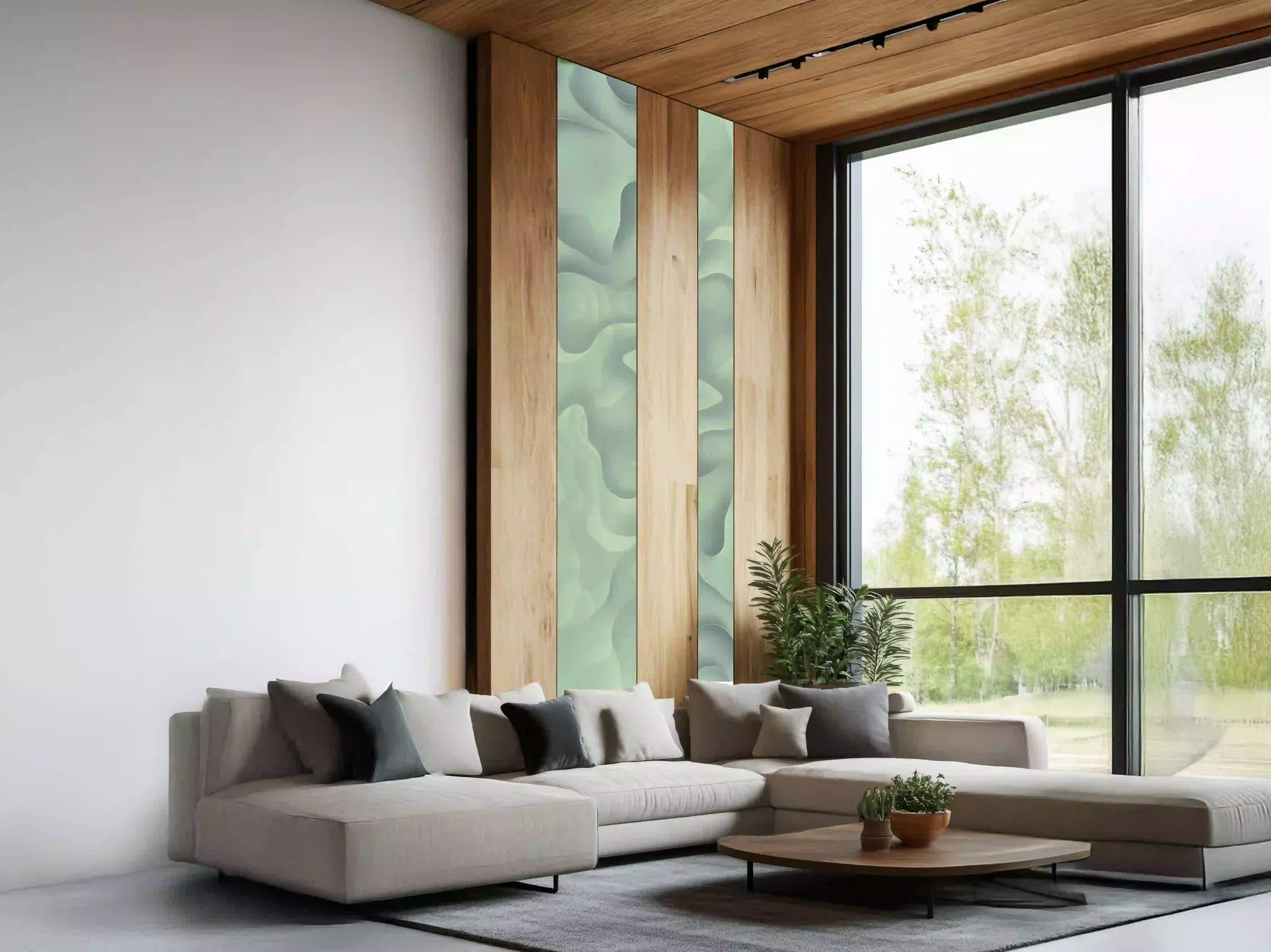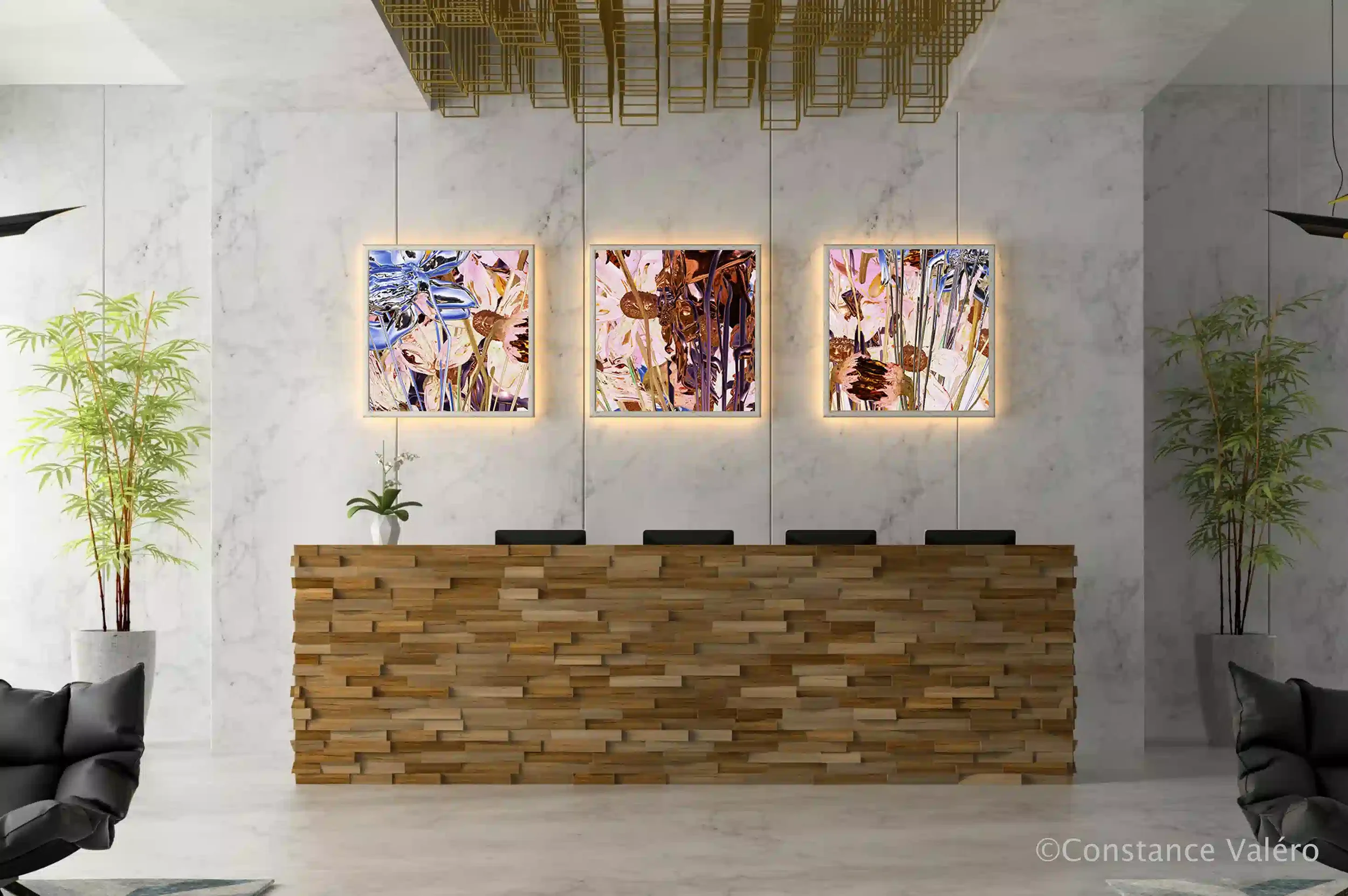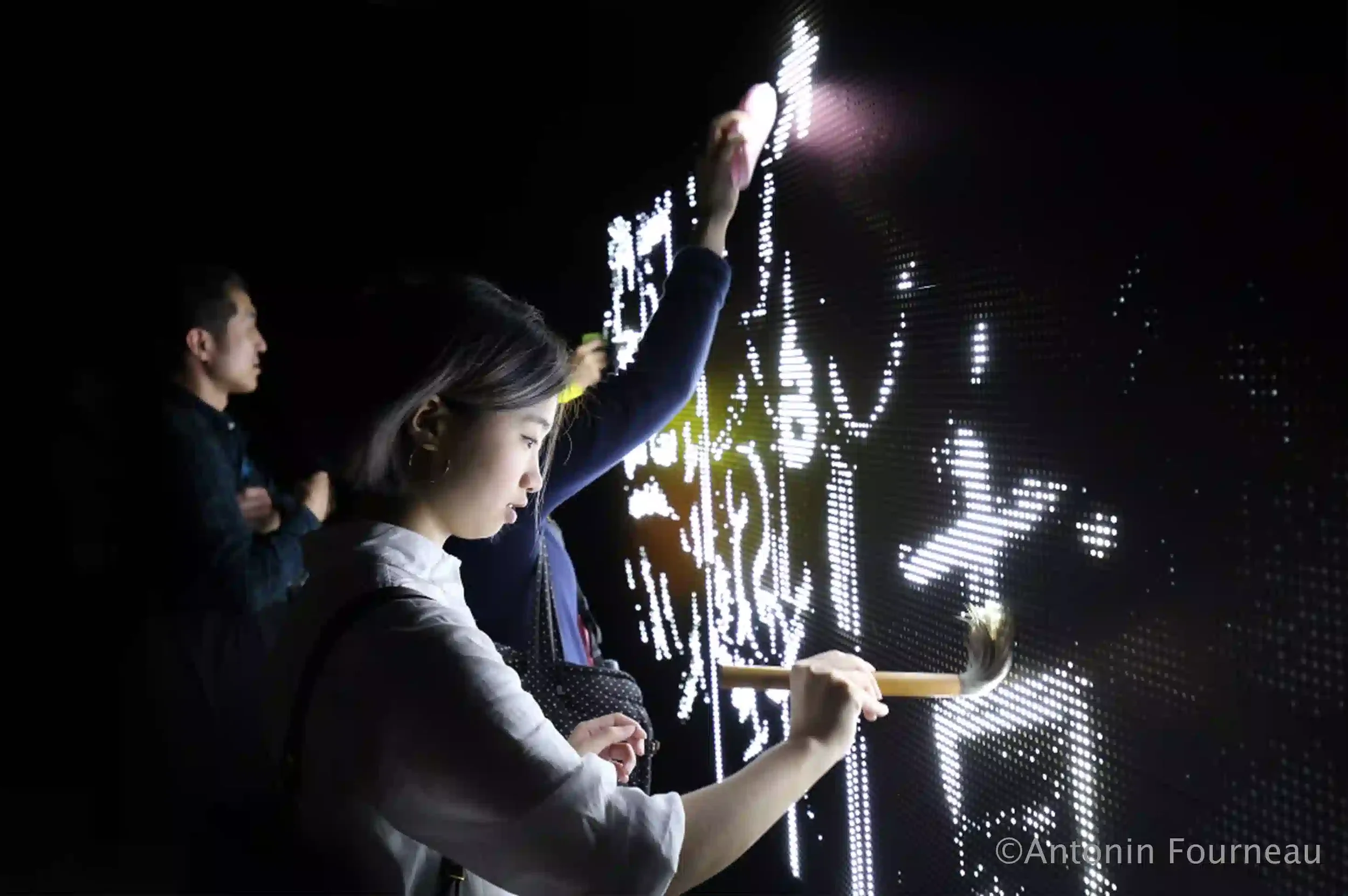Votre partenaire en art numérique qui sélectionne, intègre et transforme vos espaces en expériences.
Plus de 1400 artistes et partenaires façonnent l’art numérique avec Fu2ion.
Trouvez l’œuvre qui transforme vos espaces et crée une expérience client mémorable.
L’agence Fu2ion accompagne les architectes, les designers d’intérieur, les responsables d’établissements hôteliers et les concepteurs d’événements afin que chaque lieu devienne une expérience artistique immersive.
-

Architectes & Designers
Vous concevez des lieux où chaque détail compte ? Fu2ion vous accompagne dans le choix d’écrans et d’œuvres numériques, pour révéler la dimension artistique de vos projets.
-

Hôtels & Restaurants
Vous souhaitez offrir une expérience sensorielle unique à vos clients? Nos contenus artistiques pour vos écrans transforment vos espaces en expériences mémorables et raffinées.
-

Marques & Institutions
Vous désirez marquer les esprits à travers un discours artistique singulier ? Fu2ion propose des expériences immersives et interactives, alliant émotion et excellence curatoriale.
-

Événementiel
Lancez un produit, célébrez un moment fort ou créez la surprise. Fu2ion sélectionne et orchestre des œuvres immersives clé en main, pensées pour émerveiller vos publics.
Quand l’art inspire, tout change.
Les espaces ne se contentent plus d’être fonctionnels : ils doivent toucher, apaiser et inspirer. L’intégration d’art numérique transforme un lieu en expérience sensible et mémorable.
PERCEPTION
+45 %
de bien-être perçu dans les environnements intégrant lumière, design et œuvres artistiques.
IMAGE
2x
plus de reconnaissance de marque lorsque l’espace offre une expérience artistique immersive.
MÉMOIRE
3x
plus de chances qu’un lieu soit retenu lorsqu’il suscite une émotion.
Faites de l’art votre meilleur investissement sensoriel
Curation. Installation. Expérience.
Fu2ion, c’est votre interlocuteur unique pour une intégration d’art numérique fluide et sur mesure, en France comme à l’international.




